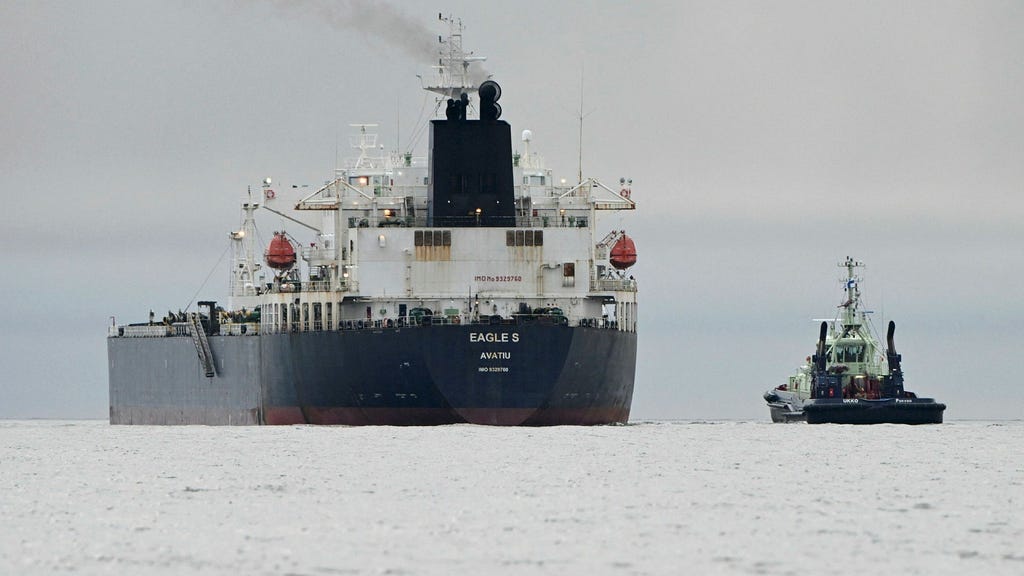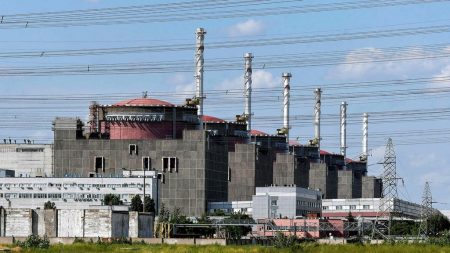The incident involving the oil tanker Eagle S and the Estlink 2 power cable on Christmas Day has raised numerous questions and suspicions. Finnish police investigations reveal a kilometers-long track on the seabed, suggesting the tanker’s anchor dragged along the bottom before ultimately colliding with and damaging the cable. While the exact point where the anchor initially dropped remains undetermined, the extensive seabed scarring indicates a significant period of dragging. This has sparked debate regarding the crew’s awareness of the situation, with maritime experts expressing surprise that such an event could go unnoticed. The dragging of an anchor typically generates noticeable noise, vibrations, and impacts the vessel’s speed, raising questions about the circumstances on board Eagle S. One possible explanation offered is that prevailing conditions or other pressing matters may have diverted the crew’s attention. However, the unusual nature of the incident and the potential consequences have led to a criminal investigation.
Finnish authorities have launched a preliminary investigation into suspected sabotage, focusing on the crew of the Eagle S. Several crew members have been questioned, and an unspecified number are considered suspects in the alleged sabotage. The tanker maintained a consistent speed of seven to eight knots as it traversed the area where the cable lies, adding further intrigue to the incident. The proximity of other crucial infrastructure, including the Estlink 1 power cable and the Balticconnector gas pipeline, adds another layer of concern. Had the dragging continued unchecked, these vital connections could have also been at risk, highlighting the potential severity of the situation. The prompt response of authorities, who arrived quickly at the scene, suggests a possible scenario where the alleged sabotage was detected and interrupted mid-action, preventing further damage.
The method employed, if indeed sabotage, appears imprecise and raises further questions about the intent and planning involved. Dragging an anchor over a vast area to damage specific cables seems inefficient and carries a high risk of detection. This raises the possibility of alternative explanations, including accidental deployment or a malfunction. However, the ongoing investigation focuses on the possibility of deliberate action, and the questioning of the crew suggests authorities are treating this as a serious security breach. The potential consequences of damaging such critical infrastructure are significant, impacting energy supplies and regional stability.
The ongoing investigation will focus on several key areas. Determining the precise point where the anchor was dropped is crucial for reconstructing the events. Analyzing the condition of the anchor and its deployment mechanism will shed light on whether any technical malfunction contributed to the incident. The testimony of the crew, combined with data from the ship’s navigation systems, will provide insights into the actions and decisions taken on board Eagle S leading up to and during the cable damage. External factors, such as prevailing weather conditions and sea state, will also be considered to determine if they played a role in the incident.
The investigation’s findings will have significant implications, not only for the crew involved but also for maritime security protocols. If sabotage is confirmed, it will underscore the vulnerability of critical underwater infrastructure and necessitate enhanced security measures. This could involve increased surveillance, stricter navigation regulations in sensitive areas, and improved detection systems to prevent similar incidents. The case also highlights the importance of thorough crew training and preparedness for handling such situations.
Furthermore, the incident underscores the interconnectedness of critical infrastructure and the potential for cascading effects from localized damage. The proximity of other vital connections, such as the Estlink 1 power cable and the Balticconnector gas pipeline, emphasizes the need for comprehensive risk assessments and contingency plans. The swift response of Finnish authorities in this case likely prevented further damage, but it highlights the need for constant vigilance and rapid response capabilities to mitigate such threats. The outcome of the investigation will be closely watched by governments and industry stakeholders across the region, as it will likely shape future security strategies and investment decisions related to critical underwater infrastructure.














